What I Buy and Why
French Entrepreneur Garance Primat Dots the Grounds of Her Family’s Chateau With Works in Dialogue With the Elements
She just launched her summer exhibition on the estate, featuring works by Olafur Eliasson and Sissel Tolaas.
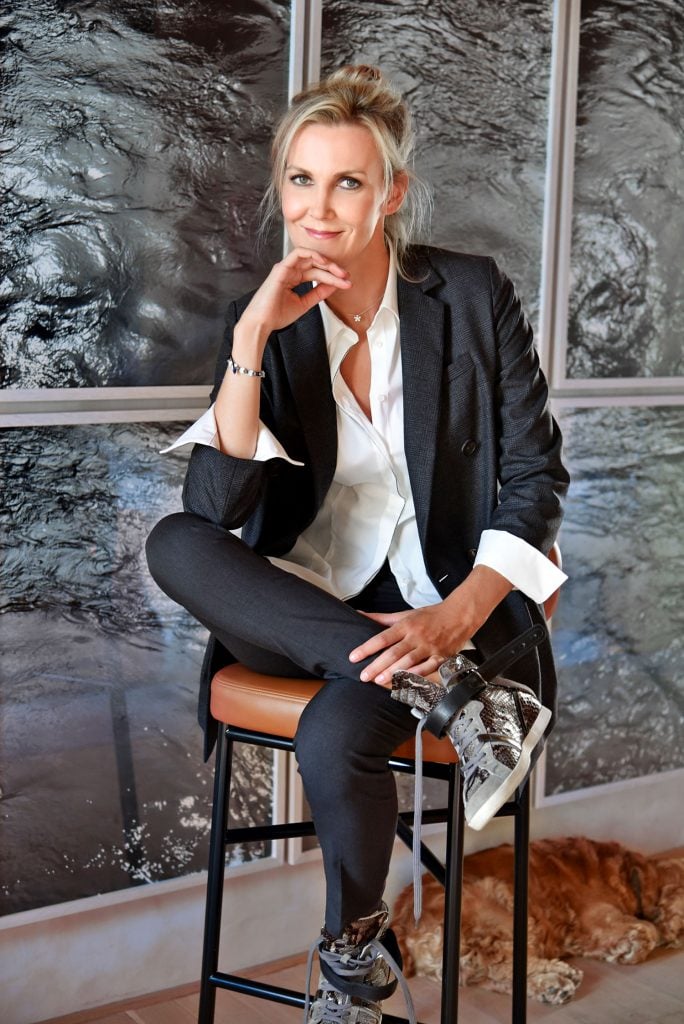
She just launched her summer exhibition on the estate, featuring works by Olafur Eliasson and Sissel Tolaas.

Lee Carter

Not many collectors are in the position of housing their acquisitions in a castle in the French countryside—but Garance Primat has done just that. The entrepreneur and philanthropist founded Domaine des Étangs—a 2,500-acre luxury resort in her family’s 13th-century chateau—with the express purpose of combining five-star hospitality, nature, and art.

Richard Long, Ring of White Marble (1993). Photo: Arthur Péquin. Courtesy of Garance Primat.
Primat’s guiding philosophy is to support artists who look to the natural realm for inspiration—such as Richard Long, Ugo Rondinone, Sheila Hicks, Tomás Saraceno, Tony Cragg, Wang Keping, and Jean-Michel Othoniel—with a particular focus on outdoor sculptures and site-specific works. Primat estimates the collection comprises over 1,000 contemporary pieces that dot the lush landscape of gardens, forests, grassland, and lakes, as well as every corner of the imposing stone chateau, from its bedrooms, libraries, and spa to a new exhibition space called the Laiterie, named after the old dairy farm.
This is an especially busy time for Primat, as each summer the chateau plays host to an exhibition with nature as its theme. Just launched, the latest—“Primordial Waters” (through March 22, 2024)—unites art with the many lakes on the property through performance, sculpture, light, sound, and even olfactive installations. Participating artists include Olafur Eliasson, Pamela Rosenkranz, Roni Horn, and herman de vries. Also included in the group show are four new site-specific commissions by Nina Canell, Daniel Steegmann Mangrané, Sissel Tolaas, and Tomoko Sauvage, who created a sound installation in which performers rubbed floating bells in a lake while the vibrations were amplified by hydrophones placed on the lakebed and piped into the gallery.
We caught up with Primat on her growing collection and her artistic rite of summer.
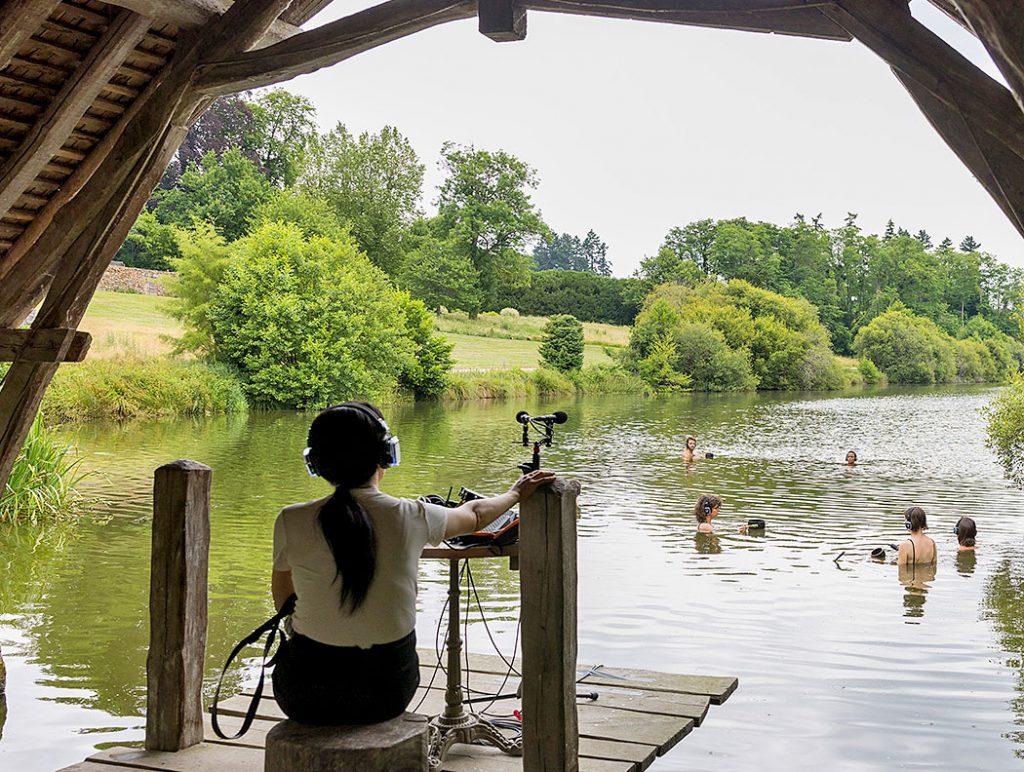
Tomoko Sauvage, For Floating Bells and Amplified Lake (where centenary mussels dwell) (2023). Courtesy of Garance Primat.
What was your first purchase?
Contemporary art wasn’t always part of my life. I don’t have any formal grounding and I didn’t study art history. I came to collecting almost by chance. I can’t remember what my first purchase was, but it’s likely to have been a design piece or an antique, a scientific object or Indigenous artwork I acquired on my travels around the world. My tastes are quite eclectic and the collection developed organically, but I soon realized that there was a thread, a coherence running through everything, that all the works I own illustrate the diverse sources of inspiration present in the world around us.
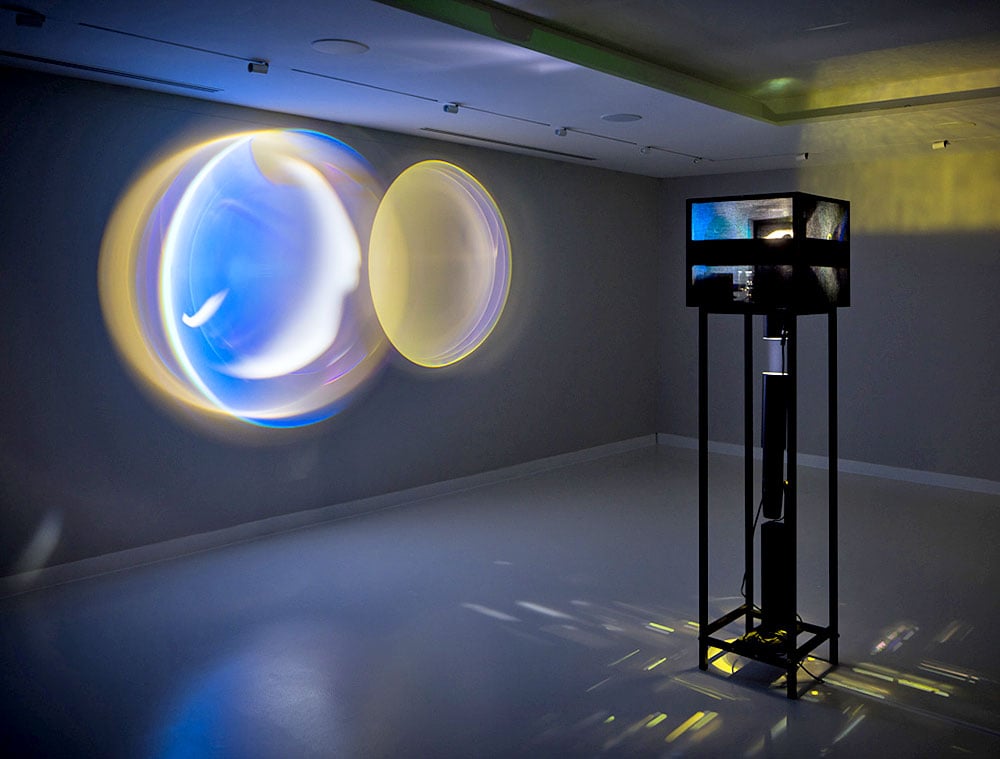
Olafur Elissson, The Casting of Soon after Now (2021). Courtesy of Garance Primat.
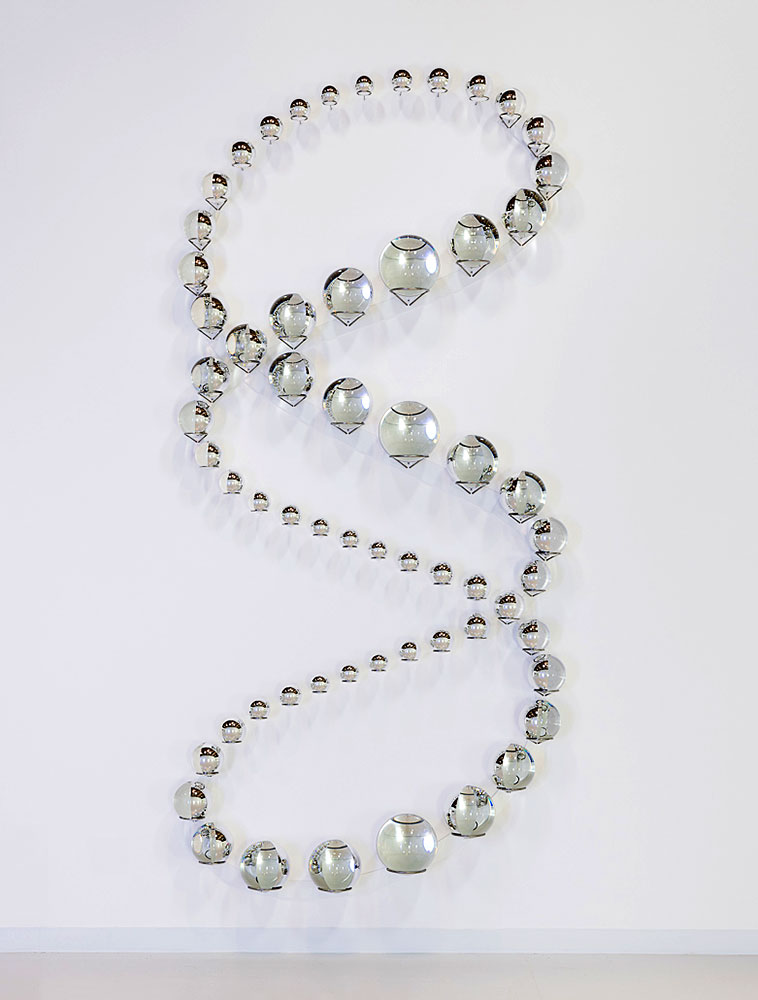
Olafur Eliasson, Antireductionist Mirror Spiral (2021). Courtesy of Garance Primat.
What was your most recent purchase?
I have recently commissioned several new works including NEWS sinking (IN)formation (2023), a site-specific work by Sissel Tolaas. She is an extraordinary artist and scientist who has ventured into the depths of the Domaine’s oldest lake to gather scent molecules. It enabled her to explore alternative communication systems through the release of chemical compounds into the gallery. This is timed to respond to the wind and tidal movements of bodies of water. Using real-time sensory data, Sissel allows us to go beyond the visual and engage with our environment differently.
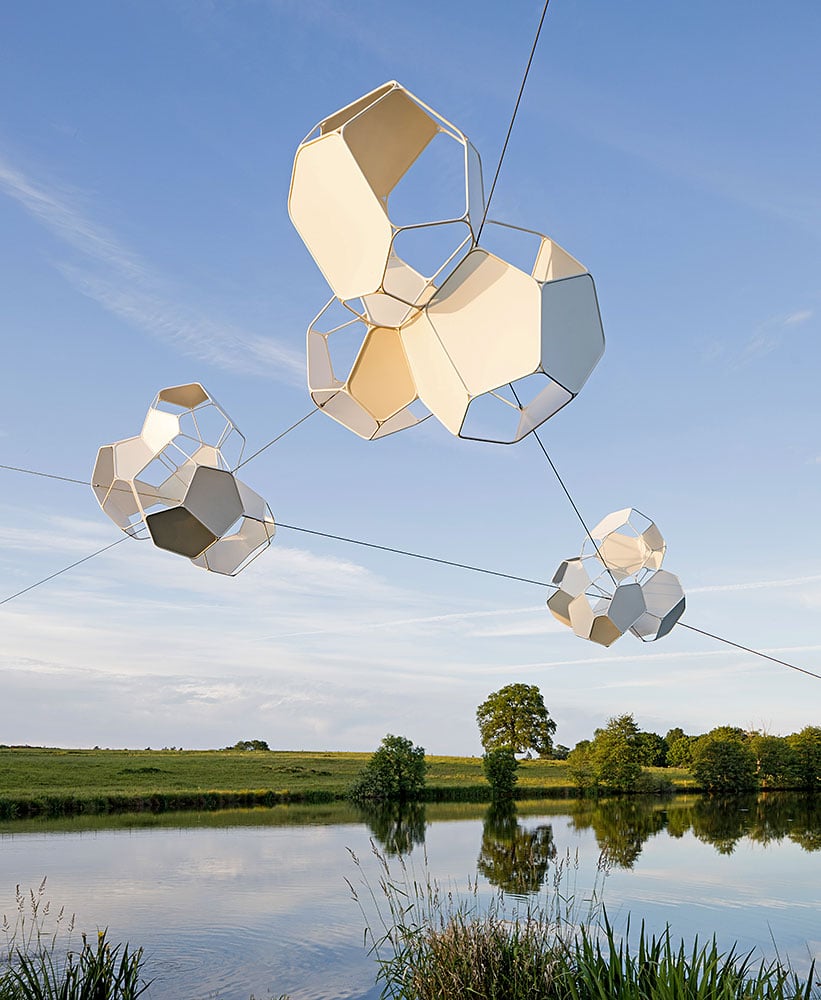
Tomás Saraceno, Cloud Cities: du Sol au Soleil (2022). Photo: Arthur Péquin. Courtesy of Garance Primat.
Tell us about a favorite work in your collection.
That’s tough. They are all part of my collection because they resonate with my passion for nature. They’re works that make us aware of and question our current way of life to suggest new possible futures. I have multiple works by some artists, including Tomás Saraceno. Sited over one of the lakes, his Cloud Cities: du sol au soleil (2022) is an aerial sculpture, a mixture of cloud shapes and spiderweb geometry.
Which works or artists are you hoping to add to your collection this year?
Not just hoping! Caroline Corbasson has been visiting the Domaine in preparation for the creation of a naked-eye observatory, which will be unveiled in December during the winter solstice. The estate sits on the rim of the Rochechouart meteorite crater and the observatory will act as a space that harmoniously brings together the elements, celebrating the interconnections between the aquatic, terrestrial and the celestial realms.
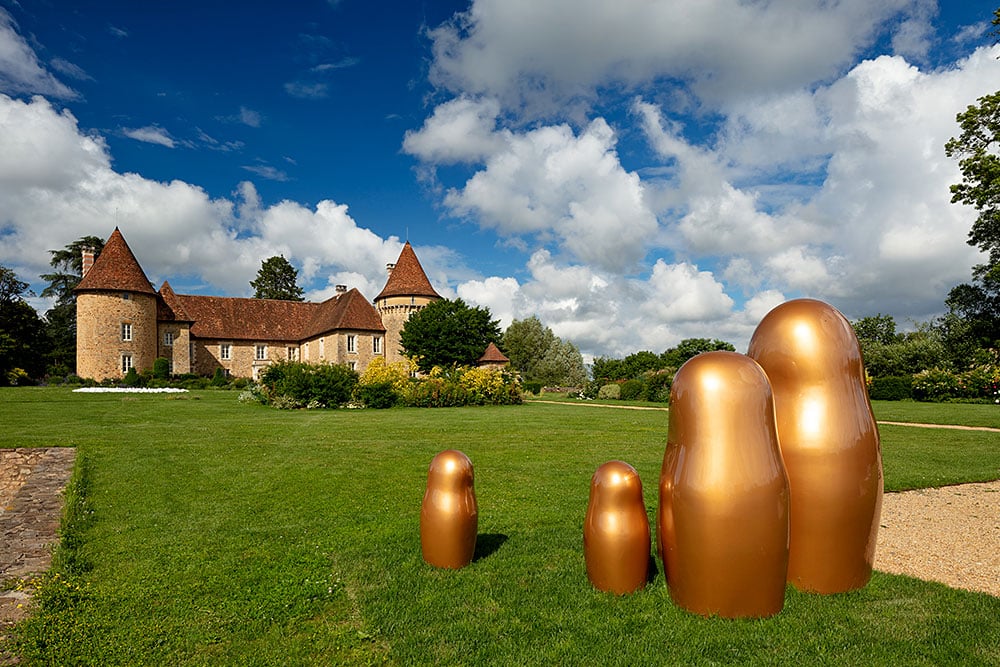
Irina Rasquinet, Mère Veilleuse (2016). Photo: Arthur Péquin. Courtesy of Garance Primat.
What is the most valuable work of art that you own?
I would consider Mère Veilleuse (2016) by Irina Rasquinet to be my most valuable work, as she created the largest of the five dolls, Matriona, to correspond exactly with my own height: 174.5 centimeters. It represents notions of care and nurturing as present in nature.
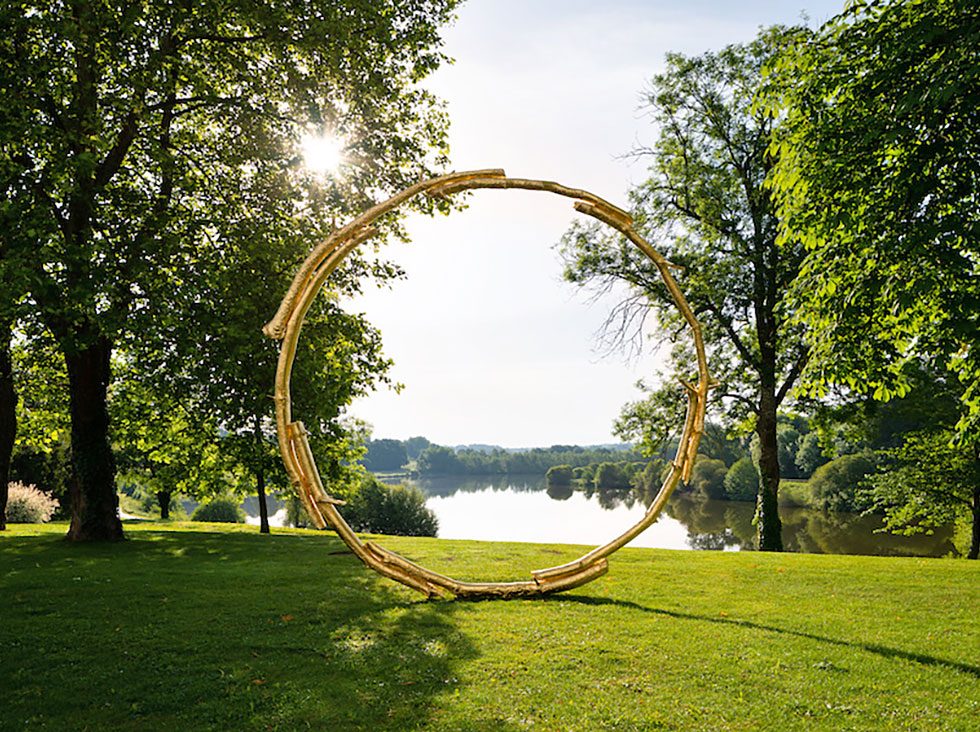
Ugo Rondinone, Sun (2017). Photo: Arthur Péquin. Courtesy of Garance Primat.
Where do you buy art most frequently?
In the past, I used to buy a lot at auctions and visit many art fairs, but now I’m consciously reducing my attendance at events like these, because I think the art fair scene has become overly commercialized. I also want to avoid being influenced by prevailing trends, so I forge relationships with artists and work in slower modalities.
Is there a work you regret purchasing?
No. It’s all part of a collecting evolution. I trust my instincts and try not to over-intellectualize.
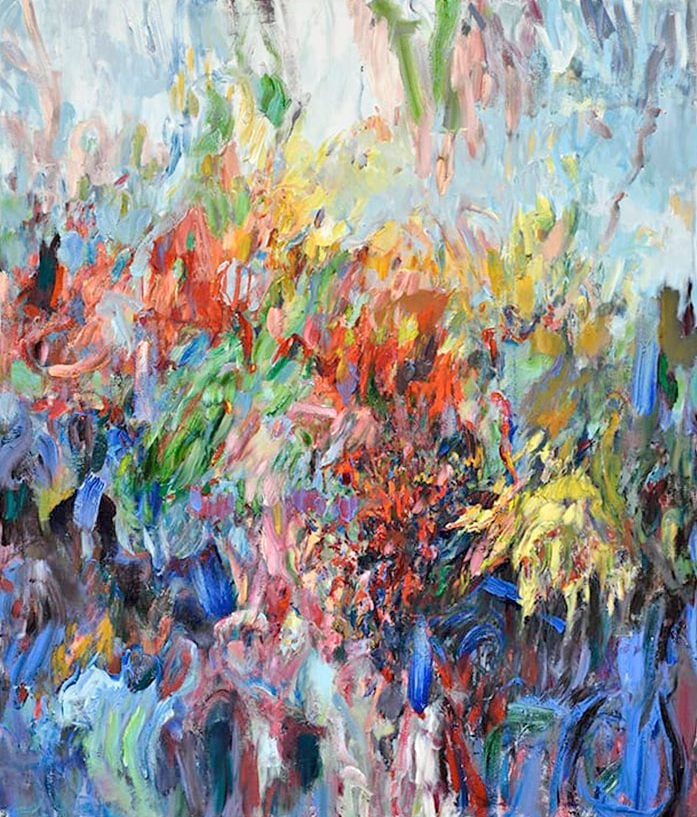
Sabine Moritz, Eden 3 (2019). Courtesy of Garance Primat.
What work do you have hanging above your sofa?
Above my sofa I have a large abstract work by Sabine Moritz, titled Eden 3 (2019), which I love. In her attempts to capture fading memories and ephemerality, she creates works which are full of life and color.
What is the most impractical work of art you own?
I’m very lucky in that having the estate and grounds means that works that might be daunting for others, because of their size or scale, aren’t really an issue. I own a number of monumental works including Relatum – The Shadow of the Stars (2014) by Lee Ufan, which was previously displayed at the Palace of Versailles. His exploration of our connection to nature and focus environmental considerations is so aligned with what I’m trying to achieve with the collection. Having the ability to install works like these at Domaine des Étangs and work with other artists on site-specific works is a privilege.

Lee Ufan, Relatum – The Shadow of the Stars (2014). Photo: Arthur Péquin. Courtesy of Garance Primat.
What work do you wish you had bought when you had the chance?
That would have to be one of Yayoi Kusama’s infinity nets. She possesses a unique ability to render the invisible visible and reveal our profound connection to nature—showing how we don’t exist outside of nature, but rather are a part of it.
If you could steal one work of art without getting caught, what would it be?
I’d steal a Monet. I’ve always loved his work for its meditative quality and beauty. He has the ability to make us see nature as a unified entity. This is something that inspires and drives me.